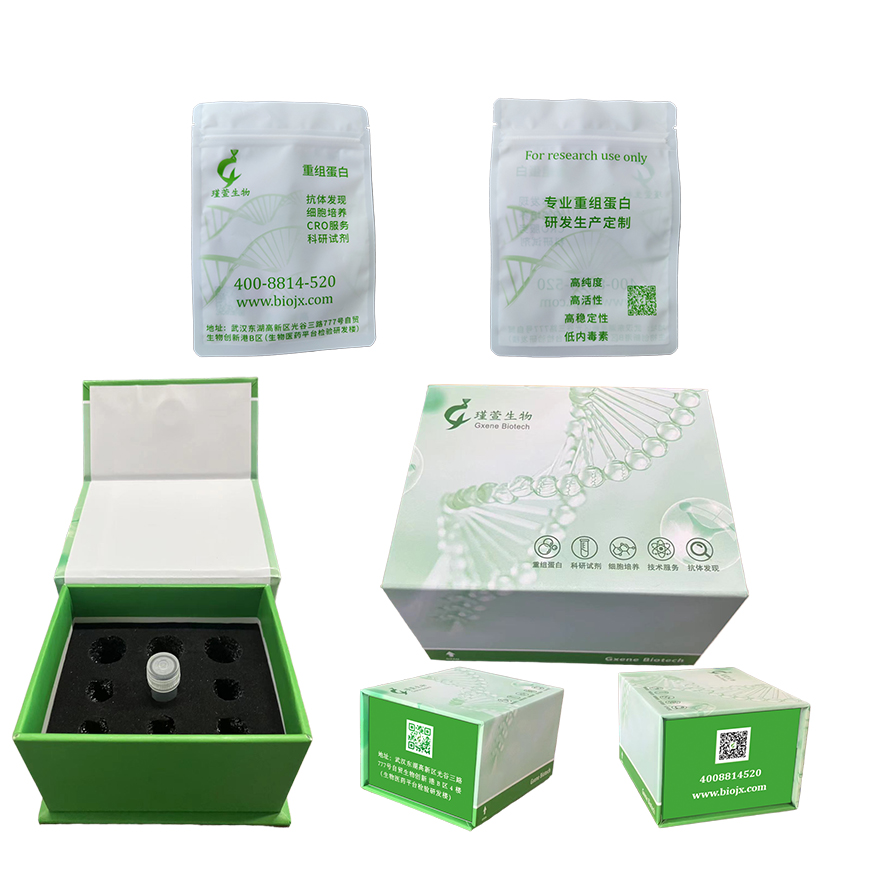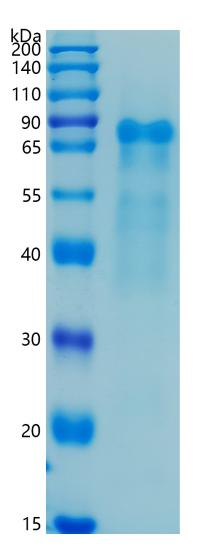



研究方向
血栓调节蛋白是一种独特的内皮细胞受体,与凝血酶建立精确的 1:1 化学计量复合物,在凝血调节中发挥着至关重要的作用。该复合物促进蛋白 C 转化为其活化形式蛋白 Ca。一旦被激活,蛋白 Ca 通过裂解凝血级联的激活辅助因子(即因子 Va 和因子 VIIIa)发挥作用,有效抑制凝血酶的产生。血栓调节蛋白与 ITGAL、ITGAM 和 ITGB2 的相互作用进一步强调了其参与调节免疫反应。
Measured by its ability to activate protein C induced cleavage of the chromogenic substrate, BOC-Asp-Pro Arg-AMC in the presence of thrombin. The specific activity is greater than 500 pmoles/min/ug.
Thrombomodulin is a specific endothelial cell receptor that forms a 1:1 stoichiometric complex with thrombin. This complex is responsible for the conversion of protein C to the activated protein C (protein Ca). Human Thrombomodulin/THBD predicts a signal peptide and a mature chain that consists of following domains: C-type lectin, EGF-like, transmembrane and cytoplasmic. Predominantly synthesized by vascular endothelial cells, THBD inhibits coagulation and fibrinolysis. THBD gene polymorphisims are associated with human disease and THBD plays a role in thrombosis, stroke, arteriosclerosis, and cancer. For example, increased serum levels of THBD, due to protease cleavage, have been associated with smoking, cardiac surgery, atherosclerosis, liver cirrhosis, diabetes mellitus, cerebral and myocardial infarction, and multiple sclerosis.